Kashmar Rugs

Grapes and raisins, pomegranates and saffron
are recalled by the name of Kashmar or
Keshmar (also known as Turshiz). It is an
ancient area, located in the middle of
Khorasan province.

Saffron
In antiquity Kashmar was renowned for the
cypress implanted by the prophet Zoroaster at
the time of semi-mythological king Kavi
Vishtaspa (kay-Gushtasp) as a token of the
faith he put on the prophet.
Kashmar had maintained its holy position
until AD 861 when the sacred cypress had
been cut under the command of fanatical
Caliph Al-Mutawakkil. The Caliph was
killed in the same year by his son Al-
Muntasir, beginning a period of civil strife in Samarra. The events have been deduced a
divine retribution by people of Kashmar.
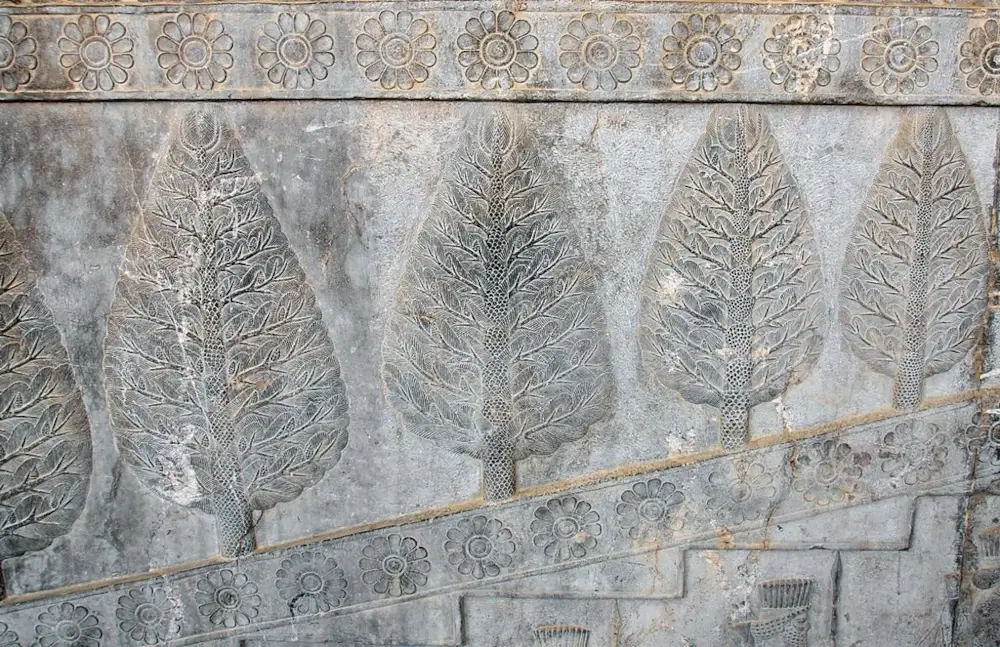
Reliefs of cypress trees in Persepolis


Mihrab of Kashmar Jame Mosque
Mirror work of Bagh Mazar-Kashmar
Today Kashmar is a small town surrounded
by orchards and vineyards. Different types of
raisins are exported from these rich
vineyards. Wickers, Zilous and hand-woven
tapestries are Kashmar’s main handy crafts as
well as high-grade carpets.
Technical aspects and the structure of Kashmar Rugs
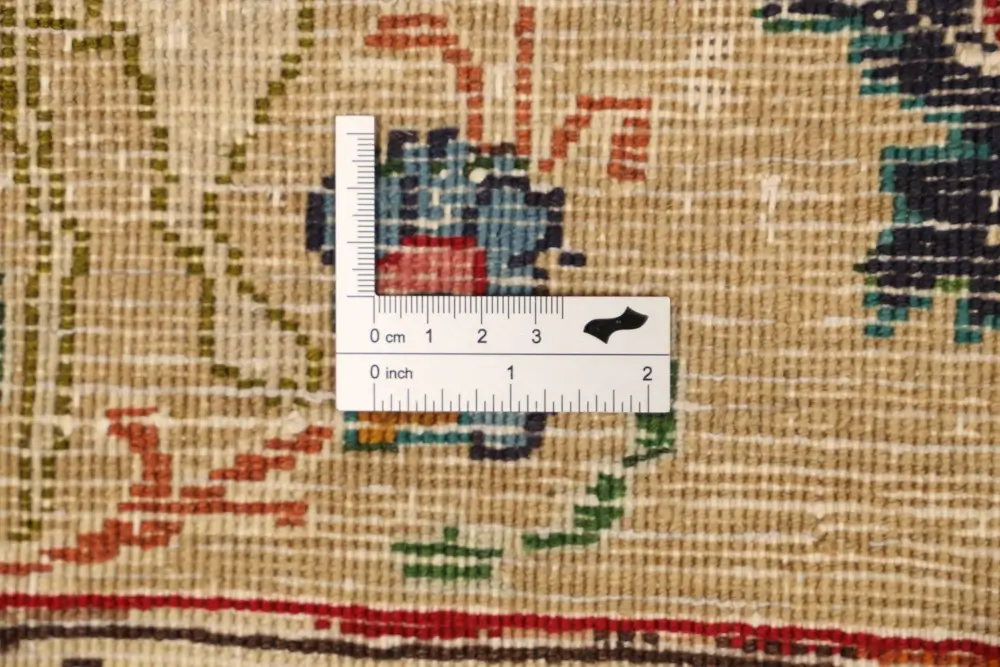

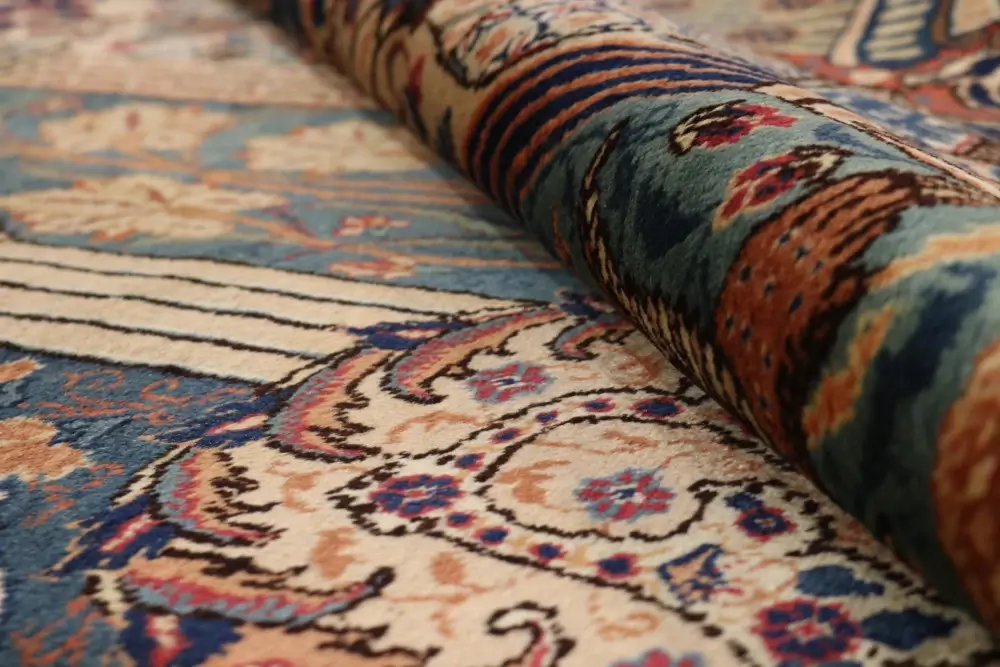
Kashmar woven pieces enjoy an honest
weave. Knots are asymmetrical (Persian),
pile is woolen with a short to medium length.
Warp and weft are cotton.
The total structure of Kashmar carpets could
be described as tight and firm but rather
flexible. Carpet sizes are more favored than area rugs
due to the necessity of pictorial designs and
the preference of Iranian domestic market.
Dyeing and painting of Kashmar rugs

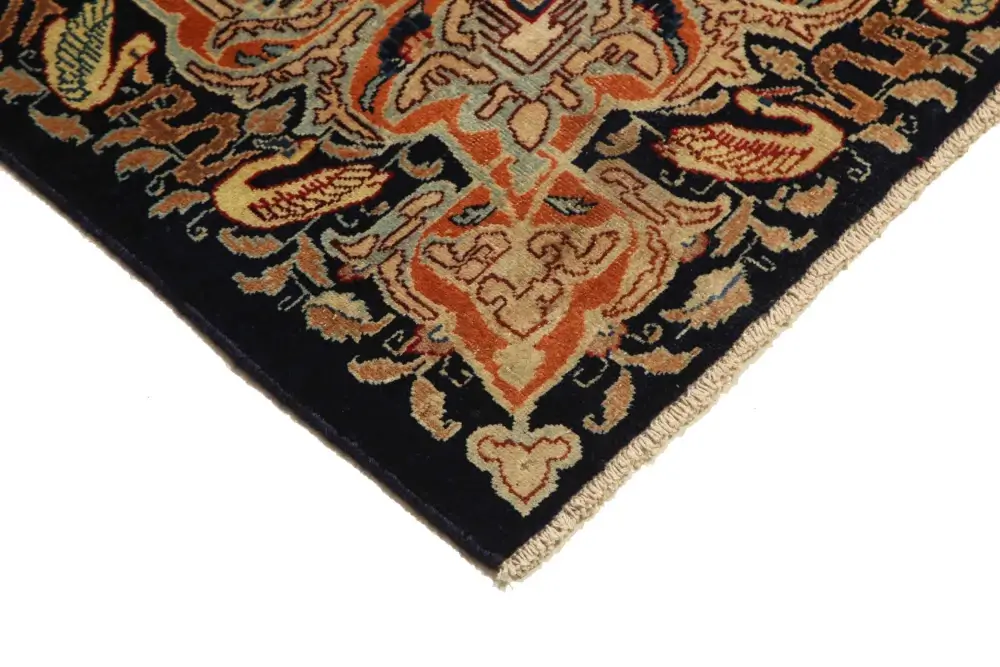

Deep dark blue is the master key to recognize
Kashmar rugs. It is the dominant color of the
grounds of almost all pieces woven in
Kashmar and villages around. Light blue or
beige are used for margins. For subsidiary colors Kashmari weavers use
light tones to moderate the total dark blue
appearance. These include a wide range:
shades of orange, crimson, bluish red, light and medium greens, cream, beige, ivory,
khaki, light blue, yellow and buff.
Fertile soil of the region provides herbal and
mineral dyestuffs.
Designs and patterns of the Kashmar rugs
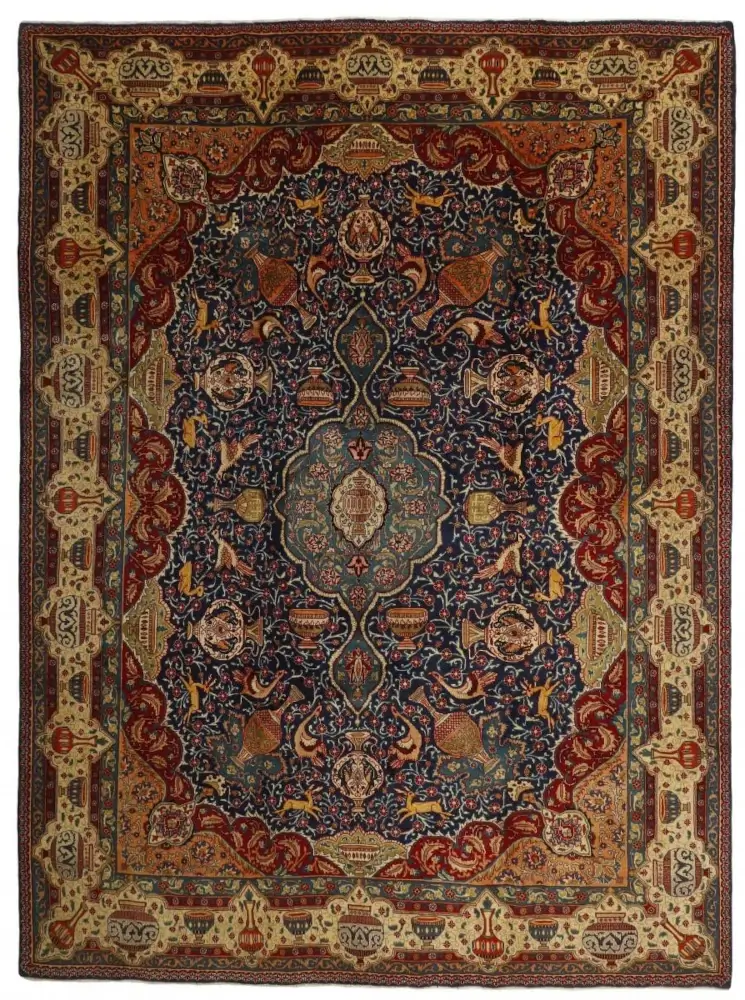
Kashmar has a reputation for Zirkhaki or
Zirhaki designs. This means literally “what is
discovered from under the soil”, shortly:
relics, including vases, pots, jars, pitchers,
crocks etc. These so-called Zirkhakis are main motifs of the design as well as birds,
animals, trees and other plants.
Zirkhaki rugs are believed to be originated in
Tabriz. Both prayer and medallion designs
provide frames for designers to be filled with
above mentioned motifs as well as pictures of
famous mosques or other historical buildings.
Persepolis is a highly regarded theme.
Iranians love to celebrate the reminiscence of
the ancient Shahs of Persia and ruins of
Persepolis stand in the center of their
attention.


